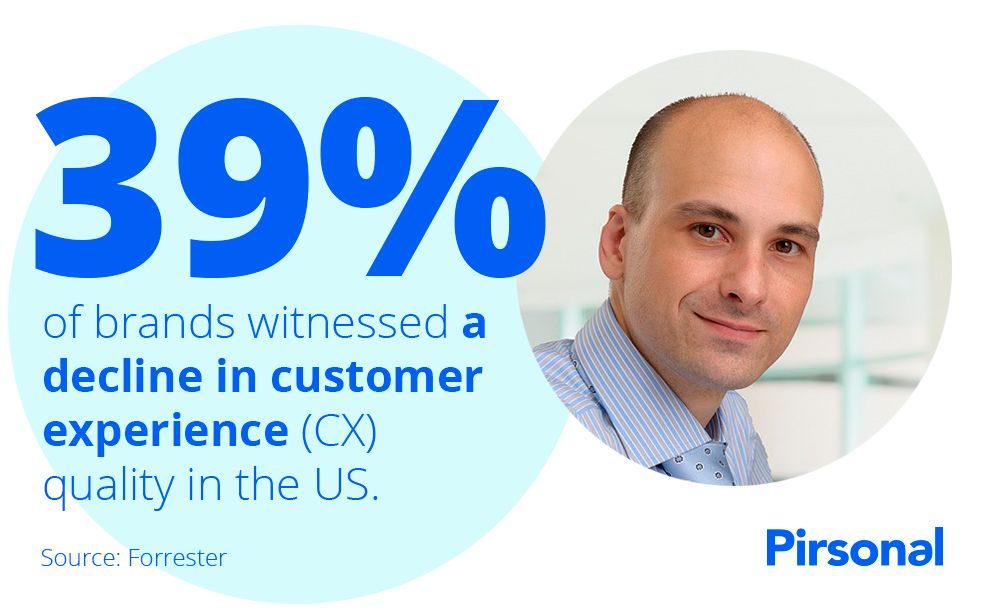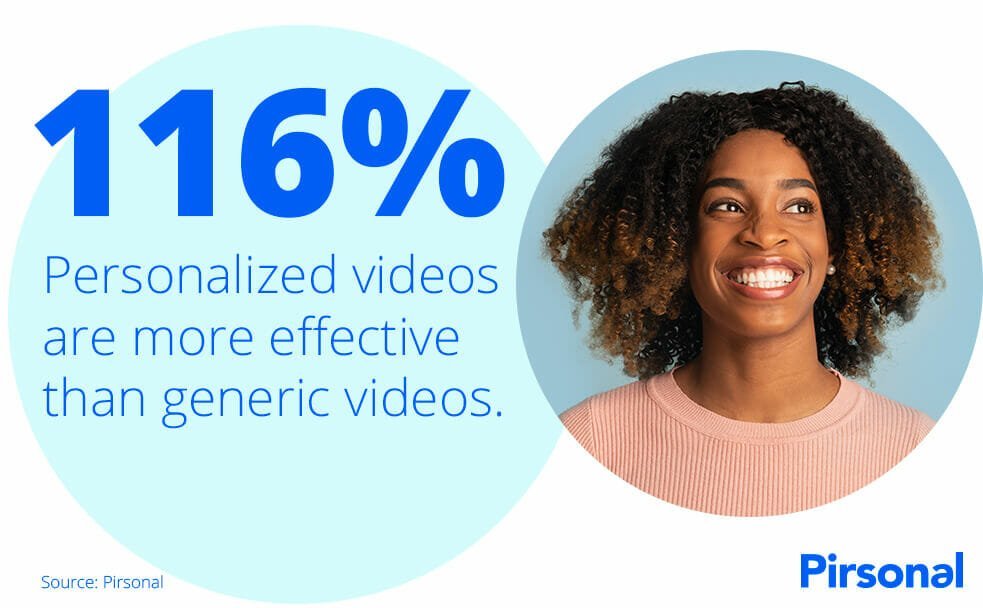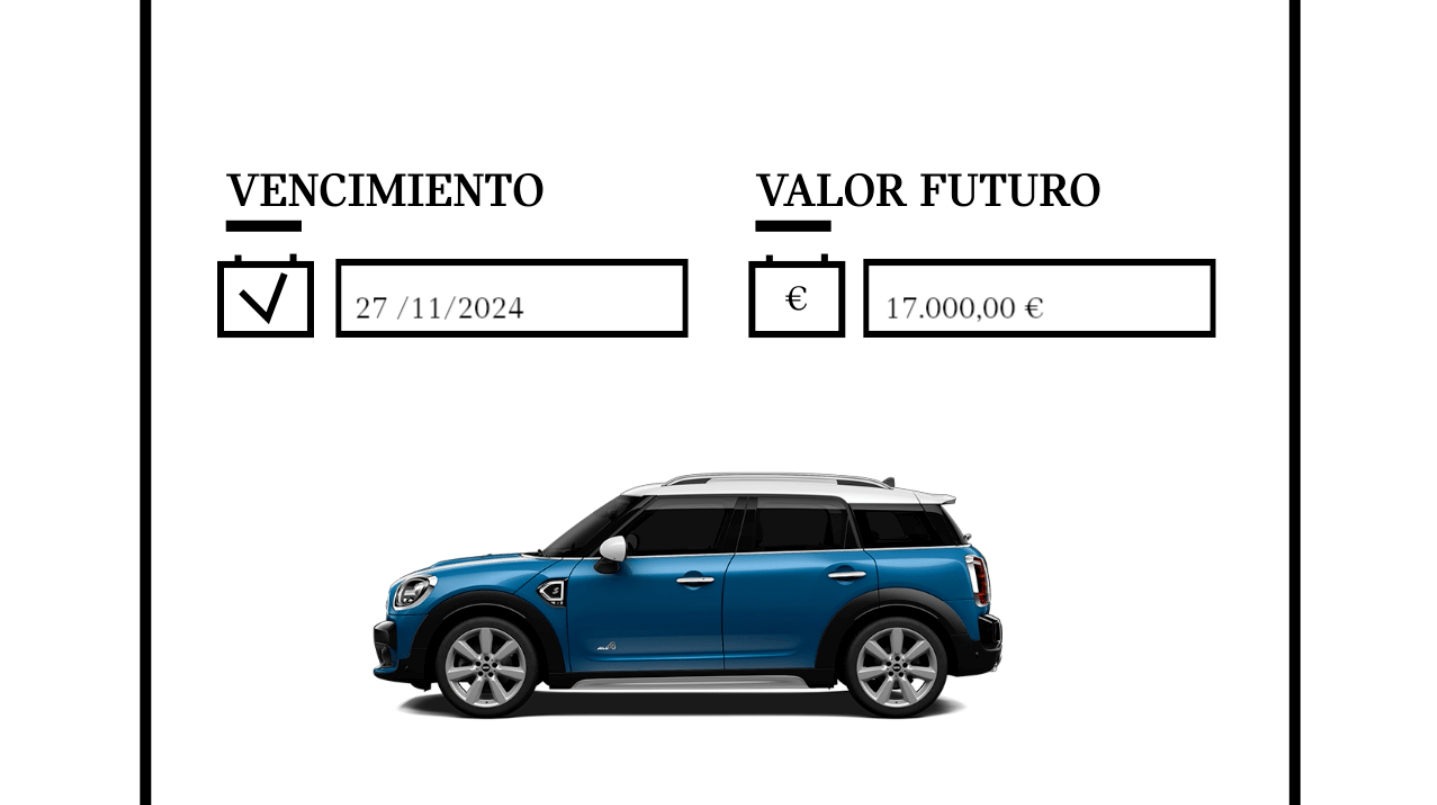
- Lost revenue: Dissatisfied customers are more likely to switch to competitors, leading to a loss of revenue.
- Negative word-of-mouth: Unhappy customers can tarnish a brand’s reputation through online reviews and social media.
- Increased churn: High churn rates can erode a customer base and make it difficult to sustain growth.
Beyond the Basics: Delivering Truly Personalized Experiences
The Limitations of Basic Personalization
While using a customer’s name can be a small step towards personalization, with today’s saturated audiences, it’s far from sufficient. To truly resonate with customers, brands must go beyond the basics and demonstrate a deep understanding of their needs, concerns, and goals.
The Power of Understanding Customers

Pirsonal’s interactive video player with personalized call-to-action.
At the heart of successful personalization is empathy and customer-centricity, even when leveraging automation. This often comes by analyzing the voice of the customer (VOC). By truly understanding your customers, you can create experiences tailored to their preferences and needs.
I believe that personalization should enhance the customer experience and facilitate their journey, rather than merely serving as a superficial way to impress them.
Here are some strategies for understanding your customers:
- Listen actively: Pay attention to what your customers are saying, both verbally and non-verbally.
- Conduct research: Gather data on your customers’ demographics, preferences, and behaviors.
- Engage in dialogue: Seek feedback from your customers to understand their needs and pain points.
Once you have a deep understanding of your customers, you can start to create personalized experiences that resonate.
Strategies for Delivering Personalized Experiences
- Leverage data and analytics: Use customer data to identify patterns and trends.
- Create tailored content and messaging: Develop content that is relevant and engaging to your customers.
- Personalize the customer journey: Tailor every interaction, from the initial contact to post-purchase support.
The Power of Video Personalization

Personalized videos perform better than generic videos in 1:1 marketing
- Increased engagement: Personalized videos are more likely to be watched and shared.
- Improved customer satisfaction: Tailored content can enhance the customer experience and build loyalty.
- Higher conversion rates: Personalized videos can drive more sales and leads.
The Future of Personalization
- AI-powered personalization: Artificial intelligence can be used to analyze customer data and deliver highly personalized experiences in real time.
- Omnichannel personalization: When possible, personalization should be consistent across all channels, from email and social media to in-store interactions.
- Predictive personalization: By anticipating customer needs and preferences, brands can proactively deliver personalized experiences.
Case Studies: The Success of Personalized Video
Mini: Streamlining Onboarding and Boosting Customer Loyalty

A screenshot of a Mini car personalized video displaying the contract expiration date and car value.
- Increase customer understanding: Clients were more likely to understand the terms of their contract and the next steps.
- Reduce support inquiries: The number of support calls related to onboarding decreased significantly.
- Boost customer loyalty: Satisfied customers were more likely to renew their leases and recommend Mini to others.
Workable: Driving User Activation and LTV

Helping users see their account usage with personalized videos
- Increase user activation: More users activated the feature after watching the videos.
- Improve user experience: Users who activated the feature were more likely to find the software valuable and easy to use.
- Boost LTV: Increased user activation led to higher LTV as users were able to leverage the full potential of the software.
Chemical Company: Enhancing Customer Engagement and Revenue
- Increase customer engagement: Customers were more likely to watch and share the videos.
- Educate customers: Customers gained a better understanding of their spending and benefits.
- Drive revenue: By highlighting exclusive offers and benefits, the company was able to upsell additional products and services.
Overcoming Challenges: Implementing Personalization Strategies
- Data quality issues: Incomplete or inaccurate data can impede personalization. Many organizations lack current customer information or only possess superficial data that doesn’t benefit their customers.
- Lack of resources: Depending on the size of your program, audience, and potential tech stack, implementing personalization may require significant investments in technology and personnel.
- Resistance to change: Employees may be reluctant to adopt new ways of working or embrace new technologies. This often happens because of a lack of experience and creative bandwidth to successfully leverage personalization.
- Security and compliance: IT, Legal, or Compliance teams may be hesitant to implement personalization due to concerns about data leaks and partnering with the wrong vendor that lacks appropriate certifications and information security processes.
- Invest in data quality: Ensure that customer data is accurate, complete, and up-to-date.
- Allocate resources: Prioritize personalization initiatives and allocate the necessary budget and personnel.
- Foster a culture of innovation: Encourage employees to embrace new technologies and experiment with different personalization strategies.
- Select certified personalization vendors: Utilize personalization software that has undergone thorough information security audits by recognized third-party certification bodies.
The Role of Leadership
- Setting clear expectations: Communicate the importance of customer experience to all employees.
- Empowering employees: Give employees the authority and resources to make decisions that improve the customer experience.
- Measuring and rewarding performance: Track customer satisfaction metrics and reward employees for their contributions to improving CX.
Improve Customer Experience with Personalized Video
- Build stronger relationships: Foster deeper connections with your customers.
- Increase engagement: Capture the attention of your audience with relevant and engaging content.
- Drive revenue: Generate more sales and leads through personalized interactions.

